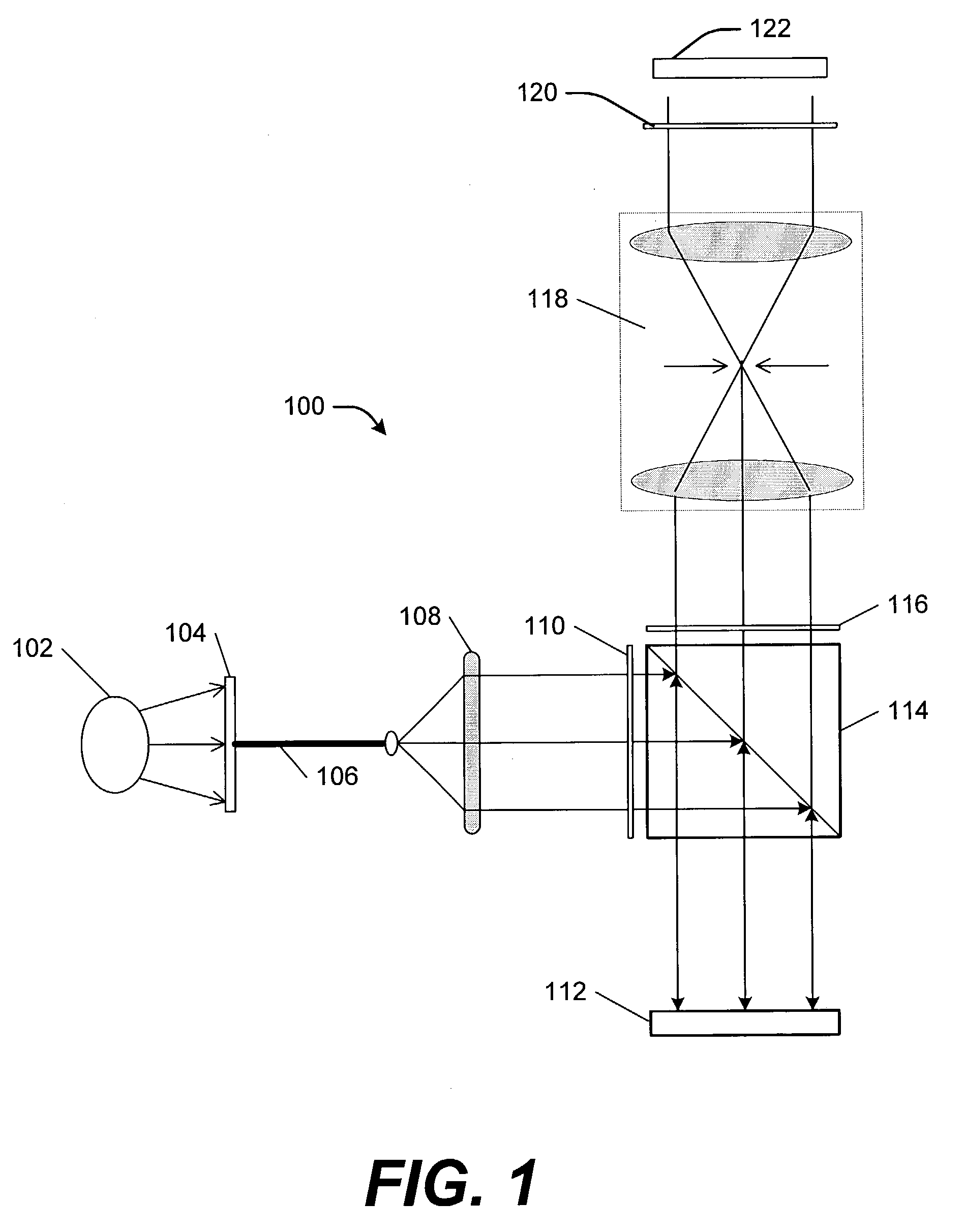Testing liquid crystal microdisplays
a liquid crystal microdisplay and liquid crystal technology, applied in the field of liquid crystal microdisplays, can solve the problems of slow speed in making a complete measurement, lc microdisplays cannot be adjusted, and the light transference characteristics of unconnected pixels cannot be adjusted
- Summary
- Abstract
- Description
- Claims
- Application Information
AI Technical Summary
Problems solved by technology
Method used
Image
Examples
Embodiment Construction
[0039] The present invention is directed to a LC microdisplay test method and system. Another LC microdisplay tester that could benefit from the present invention is more fully described in commonly owned co-pending non-provisional U.S. patent application Ser. No. 10 / 072,456, entitled "System and Method for Testing a Display Device" by Smith et al., filed Feb. 7, 2002, which claimed priority to provisional U.S. patent application Ser. No. 60 / 267,443, filed Feb. 8, 2001, both of which are hereby incorporated by reference herein for all purposes.
[0040] Referring now to the drawings, the details of preferred embodiments of the invention are schematically illustrated. Like elements in the drawings will be represented by like numbers, and similar elements will be represented by like numbers with a different lower case letter suffix.
[0041] Referring to FIG. 1, depicted is a schematic diagram of an optical configuration for a CCD sensor based camera testing system for determining LC microd...
PUM
| Property | Measurement | Unit |
|---|---|---|
| size | aaaaa | aaaaa |
| area | aaaaa | aaaaa |
| pixel size | aaaaa | aaaaa |
Abstract
Description
Claims
Application Information
 Login to View More
Login to View More - R&D
- Intellectual Property
- Life Sciences
- Materials
- Tech Scout
- Unparalleled Data Quality
- Higher Quality Content
- 60% Fewer Hallucinations
Browse by: Latest US Patents, China's latest patents, Technical Efficacy Thesaurus, Application Domain, Technology Topic, Popular Technical Reports.
© 2025 PatSnap. All rights reserved.Legal|Privacy policy|Modern Slavery Act Transparency Statement|Sitemap|About US| Contact US: help@patsnap.com



